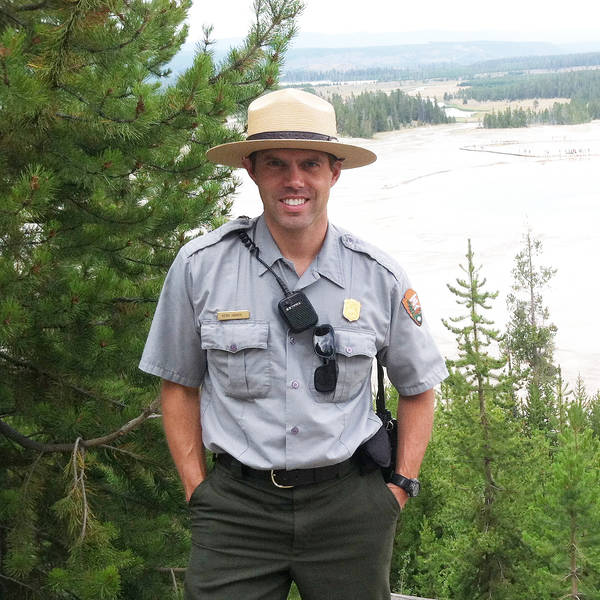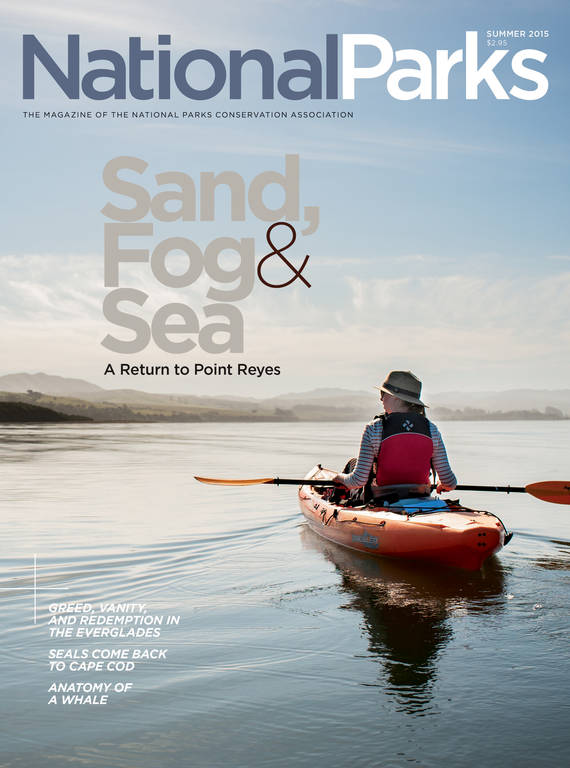Summer 2015
A Lion’s Den
The mountain lions of the Santa Monica Mountains face a rash of urban perils. Can they be saved?
One morning in March, Seth Riley, a wildlife ecologist at Santa Monica Mountains National Recreation Area, stared at his computer and then let out a triumphant cheer. GPS collars that track the movement of mountain lions in the park showed that one cat, a 16-month-old female known as P-33, had crossed the busy 101 Freeway in the Camarillo area earlier that morning. Many mountain lions had died trying to make perilous crossings over the highways and roads running through the park; P-33 was only the second cat known to have left the site in the last 13 years.
Santa Monica Mountains National Recreation Area is a study in contrasts: Chaparral-covered peaks and two of the biggest salt marshes on the Pacific Coast sit right next to some of the nation’s busiest highways. Despite its proximity to the 12.8 million residents of greater Los Angeles, the site claims one of the most diverse habitats in North America. It’s filled with shorebirds, songbirds, raptors, and 45 species of mammals, including mule deer and gray fox. It is also home to the mountain lion, which has prowled these lands for thousands of years.
THE CAT OF MANY NAMES
The question of how best to protect these elusive creatures has long vexed the National Park Service. Highways, agricultural areas, and the Pacific Ocean have trapped the mountain lions of the Santa Monica Mountains on disconnected islands of habitat, leading to a host of problems. Rat poison, which has worked its way up the food chain, has made matters even worse for these creatures, the area’s only remaining apex predators.
“We’re in danger of losing our last, large carnivore,” Riley says.
Concerned Park Service biologists began studying the animals in 2002, outfitting 30 with GPS radio collars so they could follow them and analyze their movement, diet, reproductive habits, and mortality rates. They discovered the genetic diversity of mountain lions in the Santa Monica Mountains approached that of South Florida, where years of inbreeding had contributed to birth defects and reproductive failure.
“If animals can’t leave the park, you’re more likely to see inbreeding,” Riley says. “We’ve seen a few cases where fathers have mated with daughters.”
The inability of mountain lions to travel outside their home range—typically 75 to 200 square miles—also has caused them to compete for territory. One mountain lion was documented killing the mother of its litter and two of its offspring. One of its cubs, in turn, killed two of its siblings.
The study also found that nearly all the mountain lions tested were infected with rodenticide, a common rat poison. The poison contributed to the deaths of two mountain lions and appeared to weaken the immune system of several cats, making them more susceptible to diseases such as mange, which can lead to skin lesions, infection, and starvation. Research also revealed that several other species, including bobcats and coyotes, have tested positive for rodenticide. In light of these findings, a partial ban on the use of rodenticide was enacted in 2014, and the deadliest rodenticides are no longer sold over the counter.

National Parks
You can read this and other stories about history, nature, culture, art, conservation, travel, science and more in National Parks magazine. Your tax-deductible membership donation of $25 or more entitles…
See more ›In the meantime, the Park Service has proposed building a wildlife bridge over the 101 Freeway to aid mountain lions, foxes, mule deer, and other creatures that have been killed trying to cross the park’s surrounding highways. Though that project’s future remains uncertain, a more significant change looms: In April, the Park Service released the long-awaited draft report of the Rim of the Valley Corridor Special Resource Study, which suggests adding 270 square miles to Santa Monica Mountains National Recreation Area.
“Along with expanding and strengthening the existing park, the draft report calls for protecting historical and cultural resources and engaging a multicultural, urban audience,” says Dennis Arguelles, director of NPCA’s Los Angeles office. “If the plan is adopted, the park will be more than two times its current size—a major victory for all the humans and creatures who share the park.”
After a period of public review, the Park Service will make a recommendation to Congress. Meanwhile, park expansion supporters have been getting some unexpected help—from a celebrity cat. One mountain lion, P-22, became the unofficial face of the campaign when he left the Santa Monica Mountains and crossed both the 405 and 101 Freeways before taking up residence in L.A.’s iconic Griffith Park. P-22—the first cat in the study to make this journey—quickly became a local media sensation and, by eating his natural diet of deer and rodents in a corner of the park, helped debunk the myth that urban cats stalk people and dine exclusively on household pets.
The latest GPS data on P-33, the 16-month-old female that crossed the highway in March, shows her feasting on deer and prospering just north of the Santa Monica Mountains. But both these cats are still essentially trapped, and until Congress acts—which could take years—their fate remains in limbo.
“Aesthetically and spiritually, mountain lions express something important about our area,” Riley says. “They are a symbol of the wild and a testament to how much wilderness there is around L.A. It would be a sad day if we lost them.”
About the author
-
 Kevin Grange Contributor
Kevin Grange ContributorKevin Grange is the award-winning author of “Wild Rescues: A Paramedic’s Extreme Adventures in Yosemite, Yellowstone, and Grand Teton,” “Lights and Sirens: The Education of a Paramedic,” and “Beneath Blossom Rain: Discovering Bhutan on the Toughest Trek in the World.” He has written for National Parks, Backpacker and the Orange County Register. He has worked as a park ranger and paramedic at Yellowstone, Yosemite and Grand Teton national parks and currently resides in Jackson Hole. Visit him at www.kevingrange.com.



